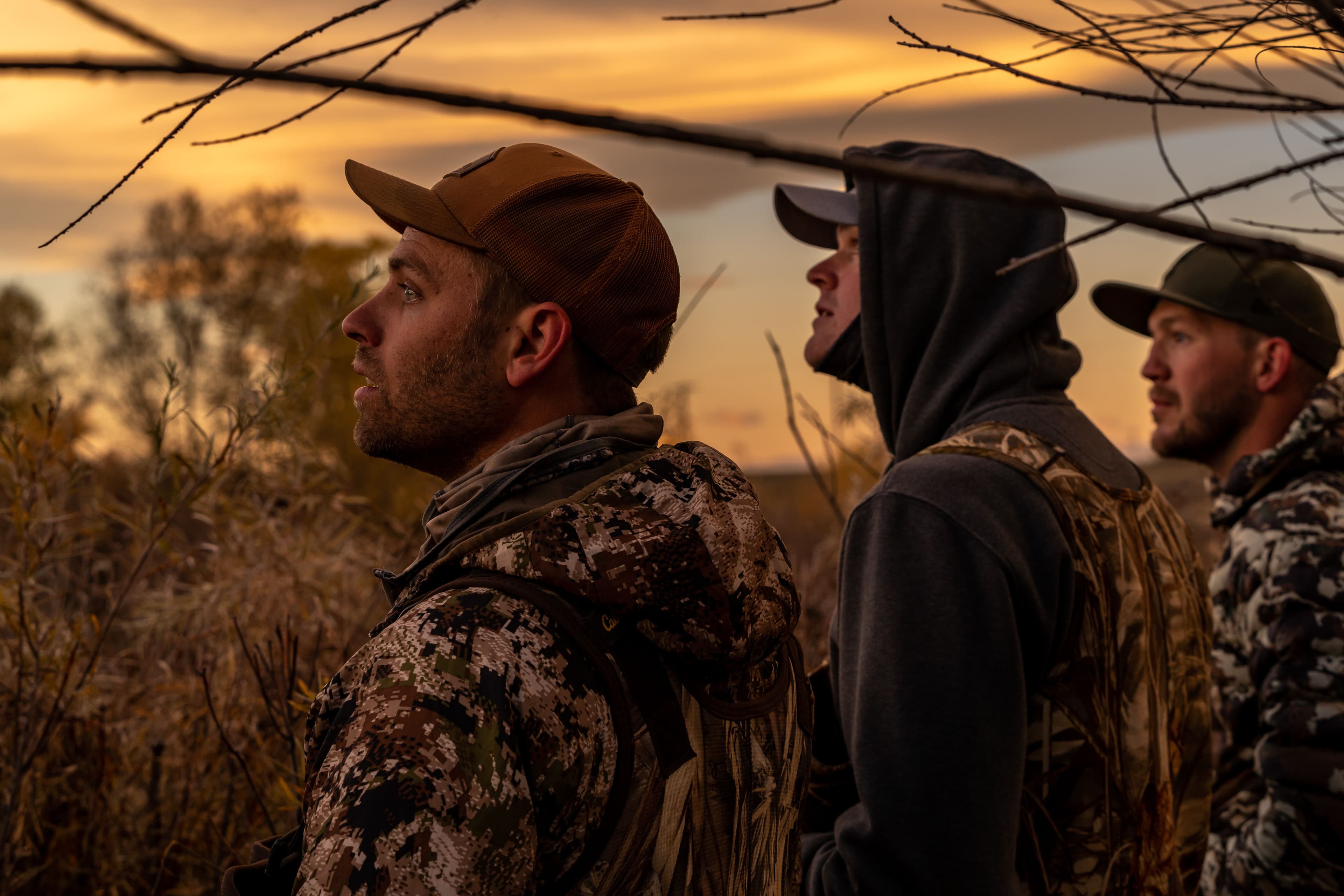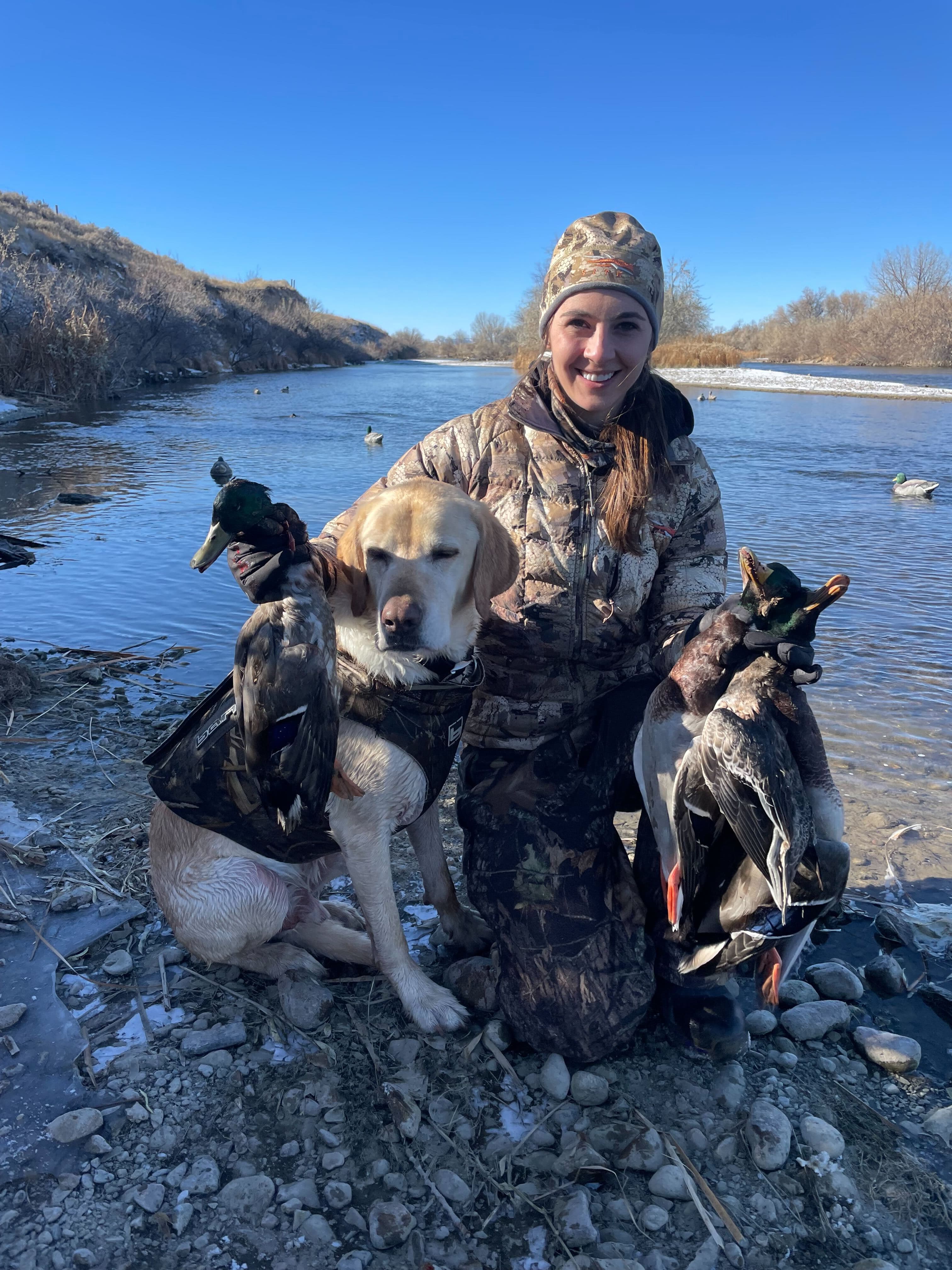Top 10 Duck Calls Every Hunter Should Master: Lessons from the Marsh


Justin Hunold
01/31/2025
If you’ve ever stood in the cold hush of a flooded timber hole or crouched in a stubble field with sunrise creeping over your decoys, you know that waterfowl hunting isn’t just about shooting ducks. It’s about communication. The conversation between man and bird—the subtle exchanges that can either bring mallards corkscrewing into your spread or see them veering off with a suspicious glance.
Duck calling, then, is both a skill and a language. Each call in your lanyard is a phrase, and knowing when and how to say it is what separates the casual caller from the duck magnet. These are my ten most-used, field-tested calls, each tied to a memory and a lesson from the marsh.

1. The Basic Quack
When to use it: Ducks on final approach, loafing water, relaxed scenarios.
Field moment: One cold morning in Kansas, a lone hen kept circling our spread. I hit her with a slow, drawn-out quack—one every few seconds. No urgency. She set her wings and dropped right in. That hen brought the whole flock with her.
Why it matters: The quack is the language of comfort. It says, "We're safe here." Nail this first, and you’ll lay the foundation for every other call you’ll ever use.
2. The Feeding Chuckle
When to use it: Birds circling low, ducks working close, finishing stages.
Field moment: Late season in Arkansas, greenheads danced above a timber hole. I let the chuckle roll—soft and rhythmic. Just background noise. They didn't hesitate. They dropped in like it was their dinner table.
Why it matters: It’s reassurance. It tells ducks the spot is active and natural. Keep it light—like you’re eavesdropping on ducks nibbling in the shallows.
3. The Greeting Call
When to use it: Ducks approaching from a distance, early stages of working a flock.
Field moment: In a snowy barley field in Alberta, I saw a flock approaching. Seven notes. Clear, descending. The moment I hit the greeting, they turned. Circled twice, then settled like falling leaves.
Why it matters: This is your open invitation. Use it to start the conversation—but be sincere. Overblow it and you’ll sound like a bad used car salesman.
4. The Hail Call
When to use it: High, distant birds; windy days; when you need attention fast.
Field moment: Public land, big water in North Dakota. Flock was sky high. I threw a long, loud hail call. They wobbled. Turned. Dropped elevation. I eased into a greeting, then quieted down. Five drakes splashed in first.
Why it matters: It's the "Hey! Over here!"—not the whole conversation. Use it with caution. If ducks are already working, shelve it.
5. The Comeback Call
When to use it: Ducks flaring or turning away, hesitant flocks.
Field moment: Missouri river bottom, birds flared hard after one pass. I let them drift, then hit them with a sharp comeback—quick bursts, urgent tone. Two peeled off. Then three more. We ended that day with heavy straps.
Why it matters: It’s the duck version of "Where you going? Get back here!" A well-timed comeback can save a hunt.

6. The Lonesome Hen Call
When to use it: Singles or pairs, late-season pressured birds.
Field moment: Late December. Ice crusting the backwaters. I threw out slow, spaced quacks—one every ten seconds. A single greenhead glided in like he was coming home for supper.
Why it matters: Soft, solitary, and real. Especially in the late season, ducks are tired of the noise. Give them one gentle voice.
7. The Mallard Drake Whistle
When to use it: Close-range finishing, wary birds, mixed flocks.
Field moment: I was in a brush-lined ditch in Colorado. Whistled soft “dweeb-dweeb” notes as birds circled. No hard calling. They cupped and landed right at 20 yards.
Why it matters: Subtle and versatile. A drake whistle adds realism and won’t scare ducks already close. A must for pressured areas.
8. The Pintail Whistle
When to use it: Flooded fields, mixed species days, early season.
Field moment: In a flooded wheat flat, pintails skirted just out of range. I laid in a soft pintail whistle, mixed with a feeding chuckle. They turned like it was rehearsed.
Why it matters: It tells the story of species diversity. Pintails are graceful birds—treat them with a whisper, not a shout.
9. The Teal Whistle
When to use it: Early season, fast-moving flocks, shallow marshes.
Field moment: Texas Gulf Coast opener. Blue-wing teal darted through the spread. Quick, high-pitched whistles—"peep peep peep." Three broke off and landed tight.
Why it matters: Teal are hot-rodders—fast, agile, easily spooked. This whistle catches their ear without alarming them.
10. The Diver Duck Call
When to use it: Big water, diver-specific hunts, visual spreads.
Field moment: On a windswept bay in Michigan, we watched bluebills skim the chop. Deep, raspy grunts matched with large decoys. Three flocks in, all fooled.
Why it matters: Divers don’t care about quacks. Give them what they know—raspy, guttural tones and big water realism.

Five Tips for Beginners
- Master the Basic Quack first. Build confidence before playing with whistles.
- Start with a double-reed call. Easier to use, more forgiving.
- Practice off-season. No surprises in real hunts.
- Call sparingly. Overcalling? Ducks bail.
- Watch bird responses. Adjust on the fly—irritated ducks? Dial it back.
Five Tips for Novices
- Learn timing—don’t just sound good.
- Add greeting, chuckle, comeback. Build a layered conversation.
- Match volume to weather. Wind demands louder; calm calls keep it subtle.
- Vary your sequence. Ducks hate repetition.
- Stay concealed. Movement kills your work—even realistic calling.
Five Tips for Advanced Hunters
- Master specialty calls. Pintail, teal, diver—know when to deploy.
- Call less, observe more. Ducks hint at what they want.
- Echo to your advantage. Timber, flooded groves—they amplify realism.
- Breathe like you mean it. Control airflow for nuance.
- Craft a signature style. Make your cadence recognizable in your hunting patch.
Final Thoughts
The more time I spend in duck blinds, the more I realize calling is about listening. Not just to ducks—but to the wind, the mood, the temperature, and the way birds move. Some days they want a song; some days they want silence. The key is speaking their language—and knowing when to shut up.
Get out there. Practice in the off-season. Listen to the marsh. And above all, keep the conversation real.
Looking to upgrade your duck talk? Check out custom calls from Colorado Custom Game Calls to add precision and personality to your calling style.